Physical Address
304 North Cardinal St.
Dorchester Center, MA 02124
We are indebted to Karam Asmaro, MD, and Nyall London, MD, PhD, for preparing the surgical video presented.
The lateral cavernous sinus is bounded medially by the cavernous segment of the internal carotid artery (ICA), laterally by the lateral cavernous sinus dura and its intimately involved cranial nerves, superiorly by the distal dural ring of the ICA, and inferiorly by the maxillary strut and V2. This irregularly shaped space filled with critical structures has been cautiously approached via transcranial techniques for decades, most notably via the surgical contributions of Dolenc. As endoscopic endonasal approaches (EEAs) have been popularized, a “bottom-up” endoscopic trajectory via an endoscopic endonasal transpterygoid approach to this anatomical space has gained popularity in comparison to the now-classic anterolateral extradural transcranial approaches. In this chapter, we will review the anatomy of the lateral cavernous sinus, and the equipment and surgical technique to safely access it from an endoscopic endonasal approach, as well as the indications for this approach.
The cavernous sinus is a blood-filled dural venous sinus that lies within the middle cranial fossa between the sella medially and the anteromedial temporal lobe laterally. It transmits multiple cranial nerves as well as arteries of the anterior circulation. In relation to surgical anatomy, the lateral portion of the cavernous sinus is defined as that which lies between the ICA, to the boundary of the cavernous sinus laterally at the dura. In contrast, the medial cavernous sinus is that portion of the sinus between the sella in the midline and the ICA laterally. In traditional endonasal microscopic approaches to the sella, it is this medial cavernous sinus that is often entered to retrieve an invasive pituitary tumor, revealing only a glimpse of the lateral compartment beyond the ICA ( Fig. 13.1 ). However, the advent of endoscopy has led to a greater interest in accessing the lateral cavernous sinus from an endonasal standpoint, and therefore an intimate knowledge of the critical structures in this anatomic space is required. Superiorly, the lateral cavernous sinus is bounded by the upper cavernous ICA and its distal dural ring, and inferiorly by the maxillary strut , (the bone arising between V1 at the superior orbital fissure and V2 at foramen rotundum) and the V2 segment of the trigeminal nerve ( Fig. 13.2 ). Within these boundaries are the ICA and its associated sympathetic plexus, and cranial nerves III (oculomotor nerve), IV (trochlear nerve), V1 (ophthalmic trigeminal nerve), and VI (abducens nerve; Figs. 13.3 and 13.4 ). Importantly, the abducens nerve runs freely within the cavernous sinus ( Fig. 13.5 ) and is medial to cranial nerves III, IV, and V1, which run in the lateral dura leaflet. , The abducens is therefore more prone to injury in EEA to the lateral cavernous sinus, since it is the first cranial nerve encountered within the sinus when approached from an endonasal perspective and its displacement by a mass lesion is not always predictable. The other cranial nerves, however, are on the far (lateral) side of any mass lesion within the cavernous sinus when approached from an EEA, and this is an advantage over the transcranial route where the cranial nerves are superficial in the field to the pathology and must be worked around.
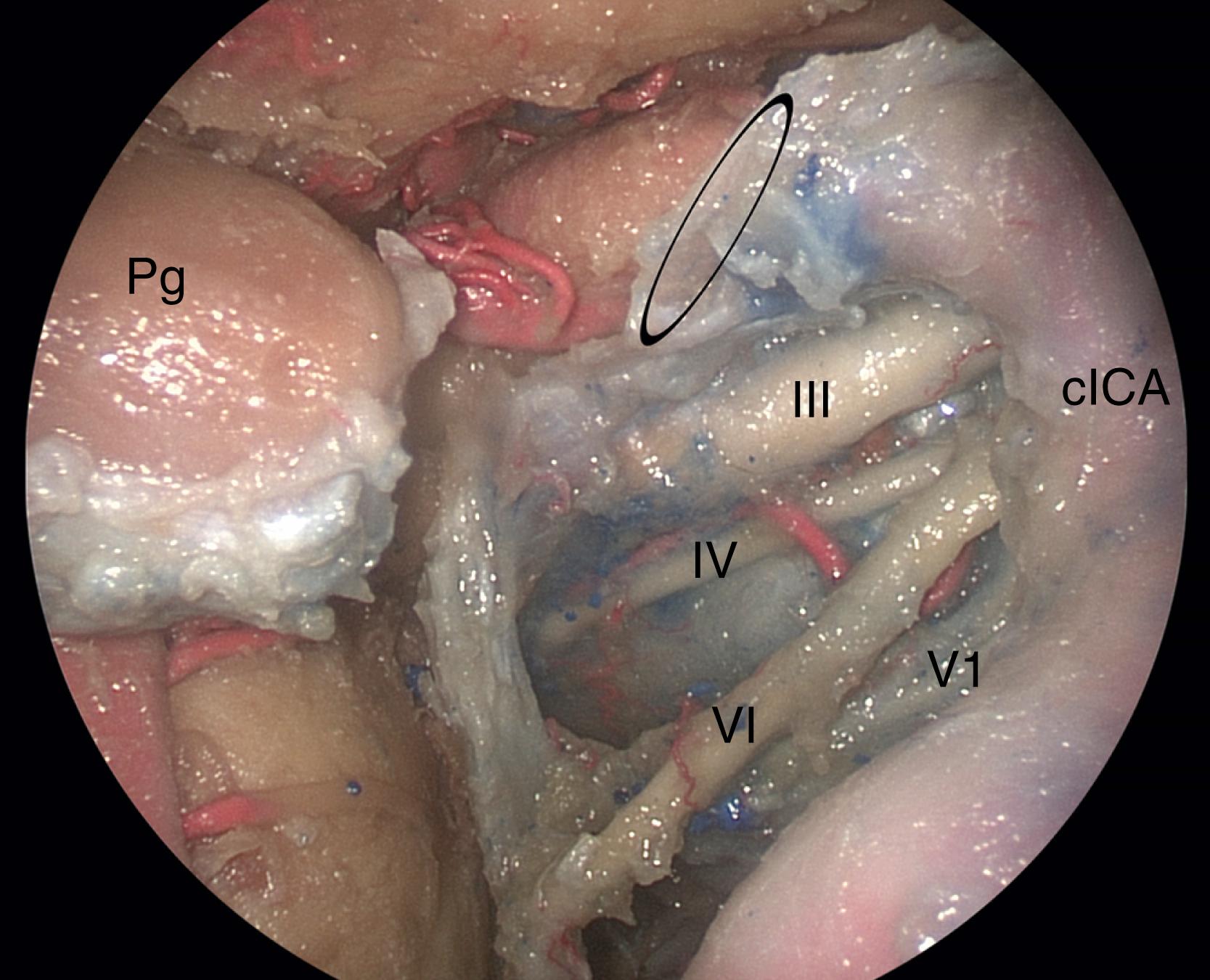
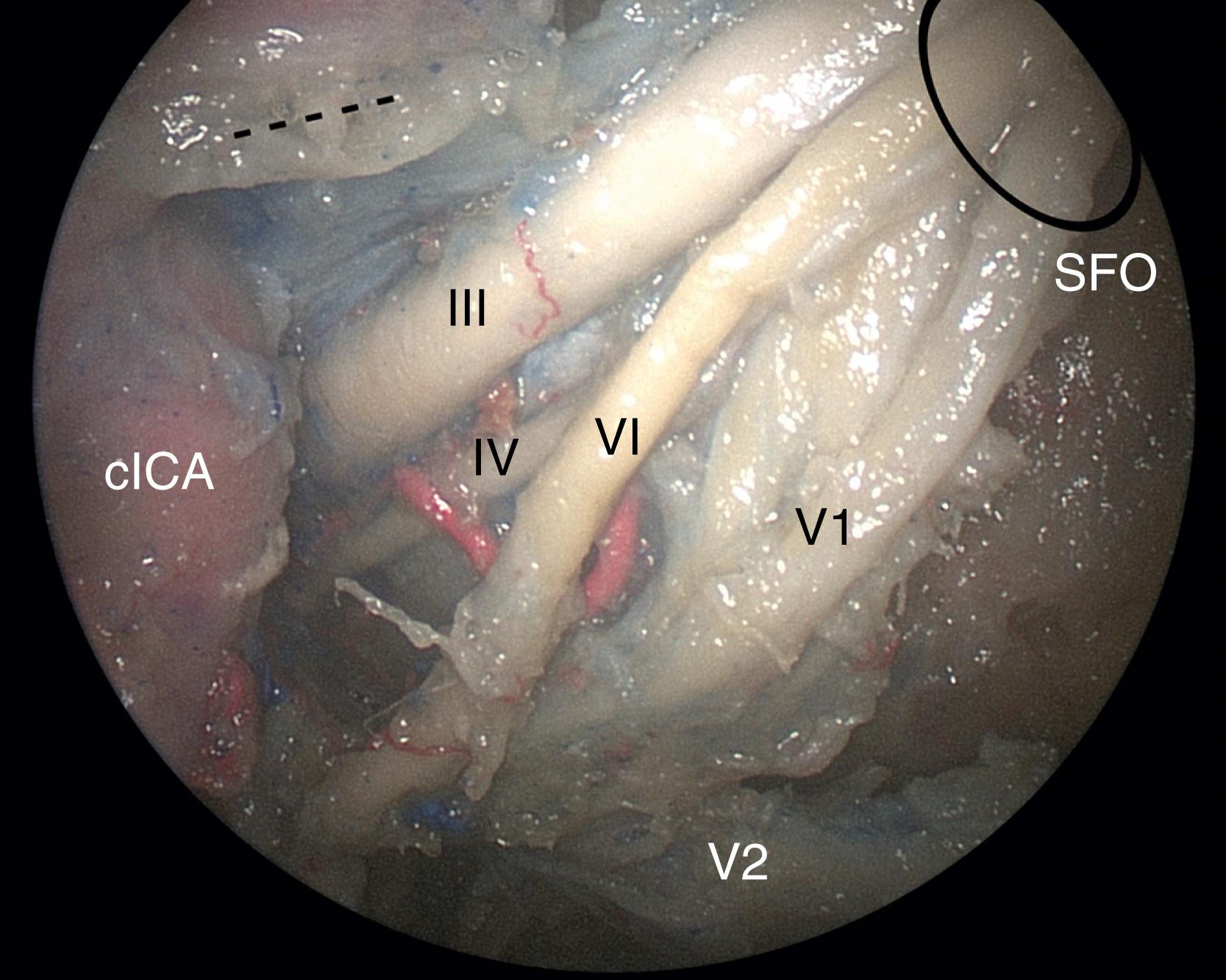
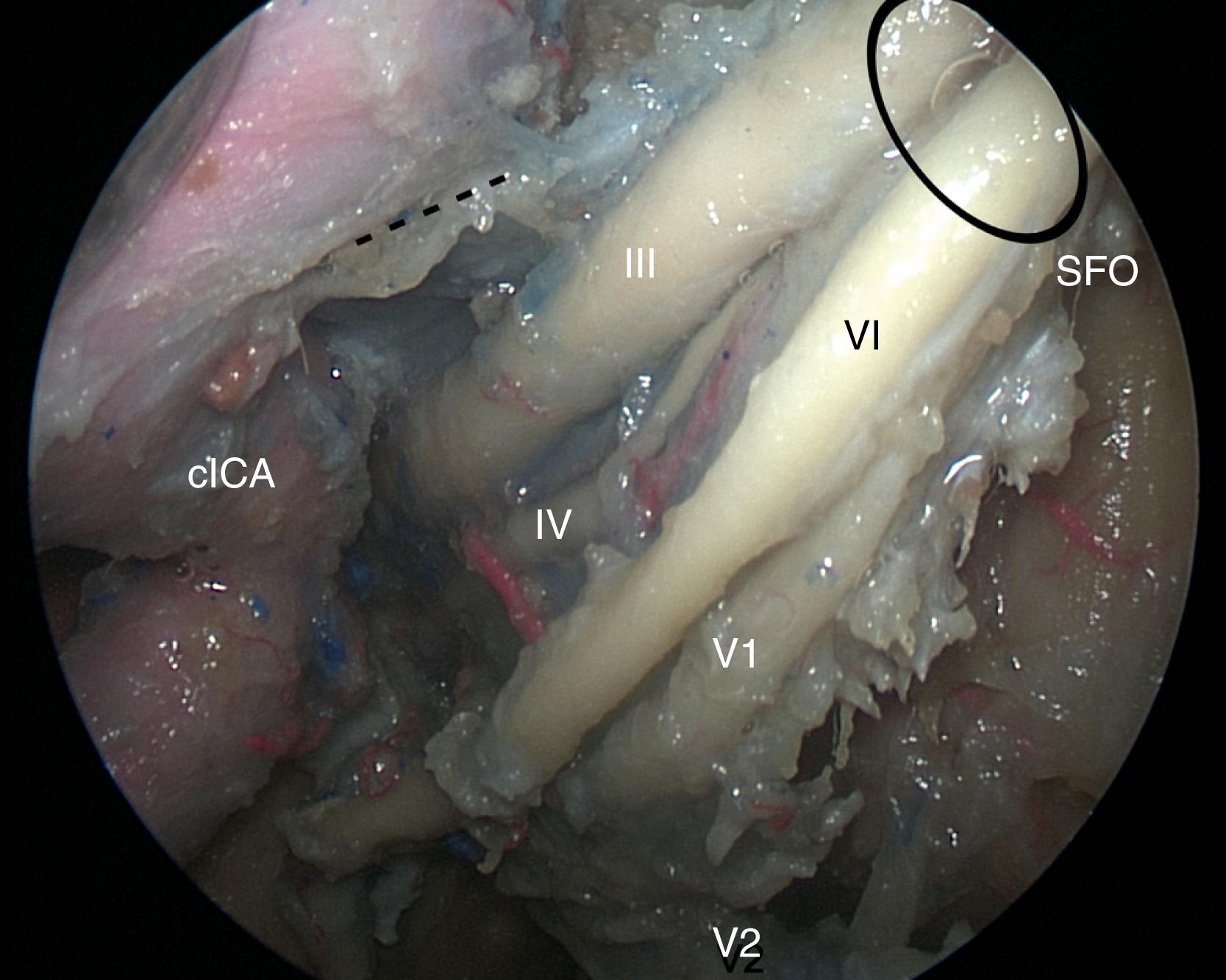
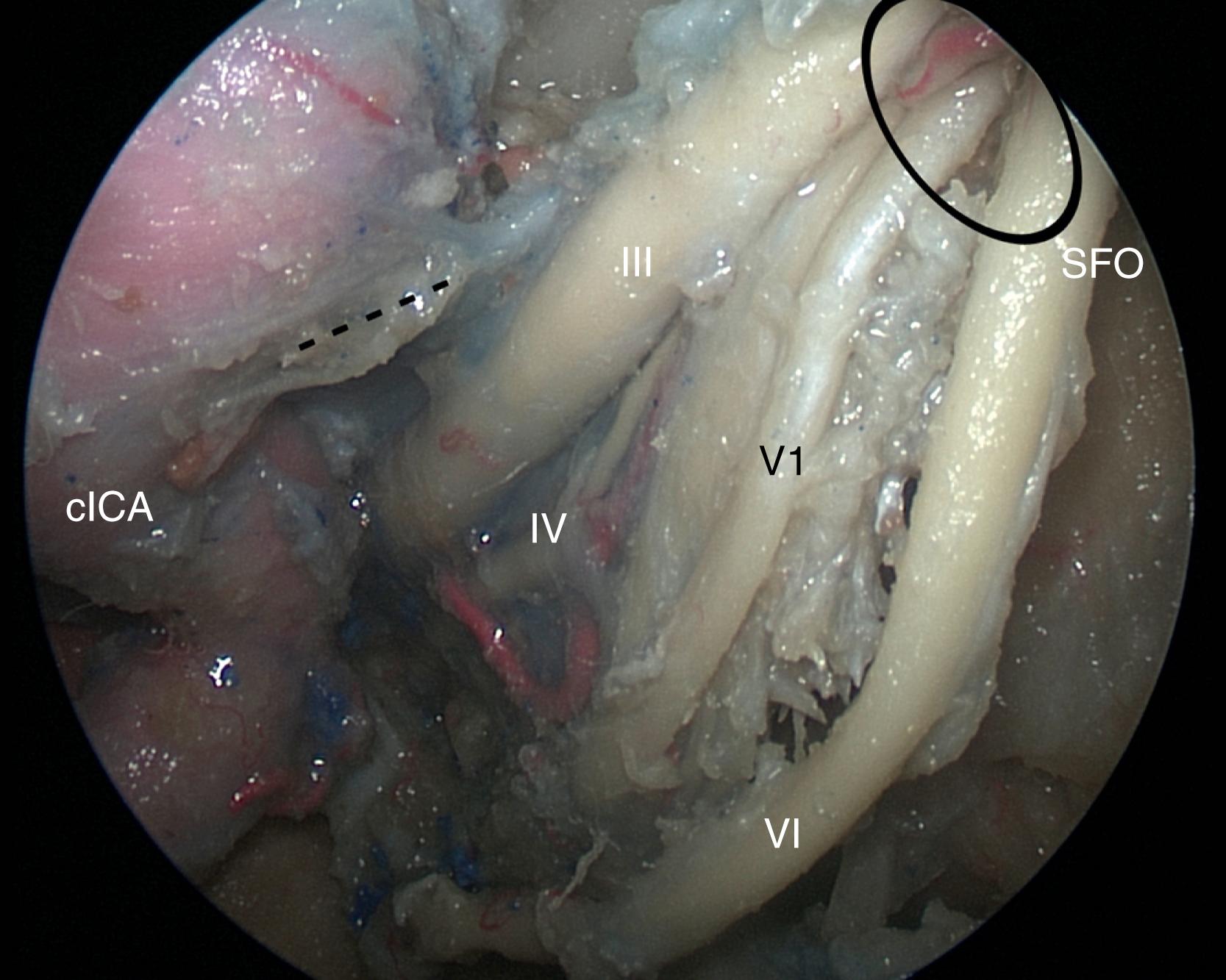
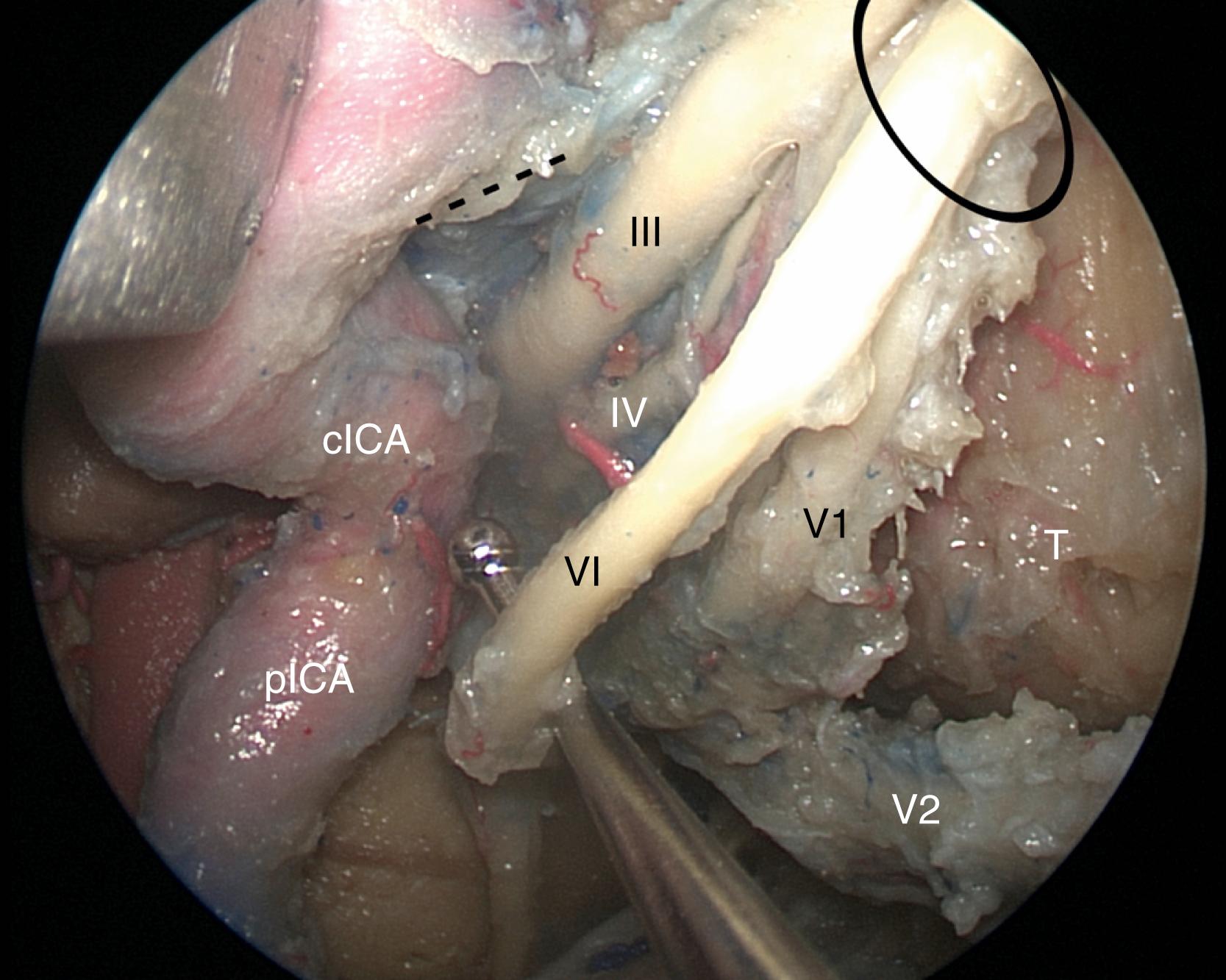
The surgical indications for an endoscopic endonasal transpterygoid approach to the lateral cavernous sinus must be carefully examined for each patient, due to the potential for iatrogenic morbidity and the relatively benign nature of most diseases in this anatomic compartment. The most common surgical indication is an invasive pituitary macroadenoma that has invaded the lateral cavernous sinus from the medial compartment. Meningiomas of the cavernous sinus may also be treated via EEA. The fibrous nature of some meningiomas and other cavernous sinus pathologies may preclude a gross-total resection, with the goals of surgery being to decompress the cranial nerves and obtain tissue for pathology, and planned stereotactic or fractionated radiation thereafter, to minimize morbidity. Other benign and malignant lesions in this area include schwannomas, chondrosarcomas, chordomas, hemangiomas, metastases, and local spread of sinonasal malignancies such as squamous cell carcinoma. We do not believe there is a role at present for endoscopic endonasal management of vascular lesions within the cavernous sinus, such as ICA aneurysms; these are best left to either endovascular management or traditional open approaches. Benign lesions with significant intradural expansion into the middle or posterior fossa may require a staged approach, with a planned craniotomy 8 to 12 weeks following an initial EEA.
Become a Clinical Tree membership for Full access and enjoy Unlimited articles
If you are a member. Log in here